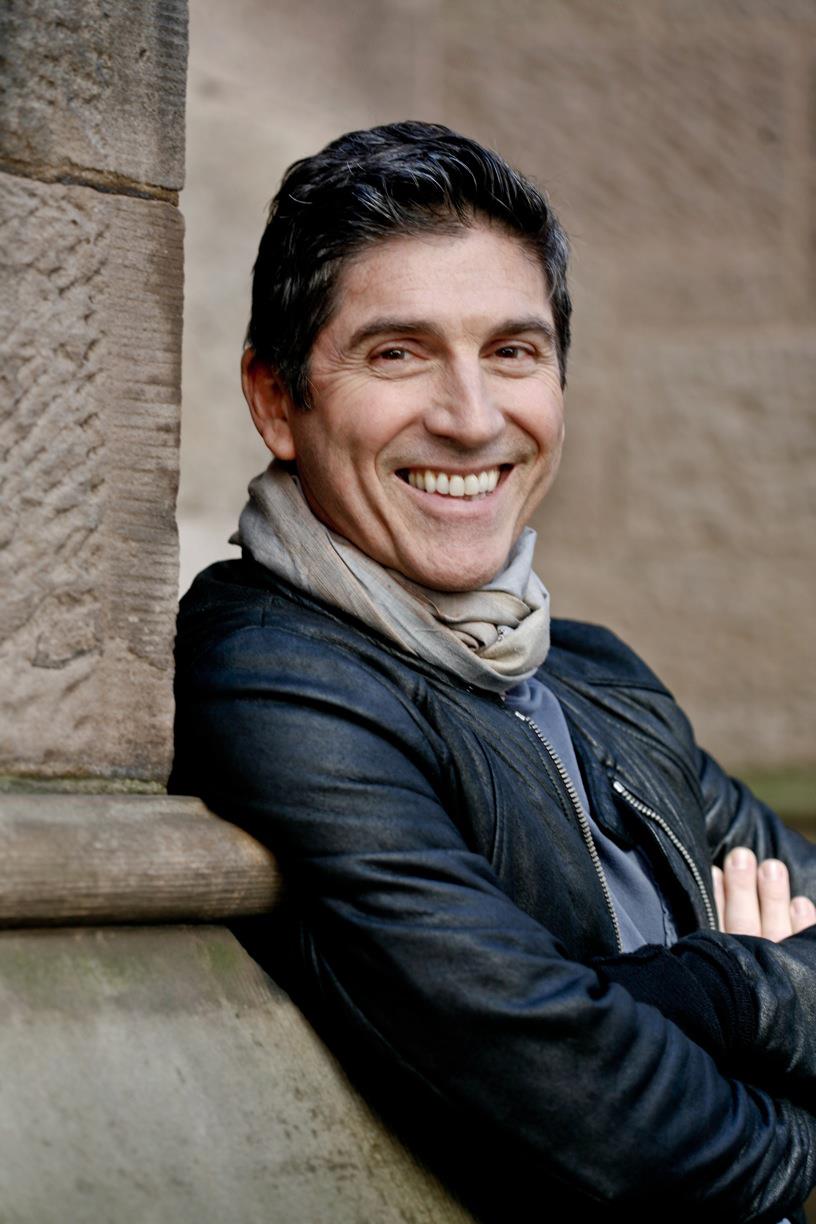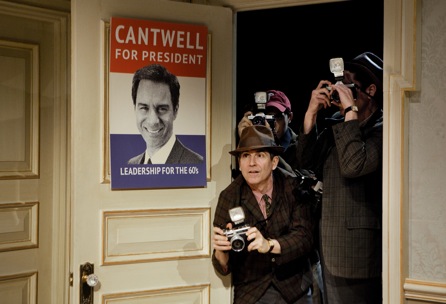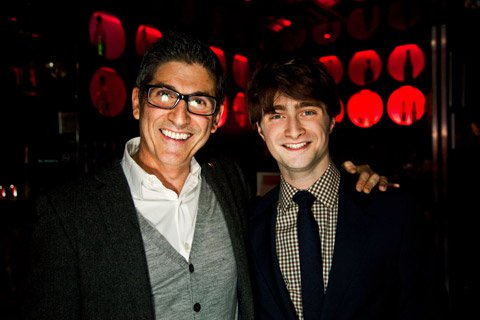 James Lecesne is an Academy award winning filmmaker, teacher, and philanthropist. It’s been an exciting time for James with a Tony nomination for The Best Man and soon after that receiving the role of Dick Jensen opposite James Earl Jones and Angela Lansbury. However, we especially commend James on the release of his book The Letter Q, a passion project conceived to inspire the youth of America and to raise proceeds for The Trevor Project which he had founded in 1998. We had a chance to speak with James about his inspiration for the book and his teaching at the New York Film Academy. He also shared key insights into the craft of storytelling and how the industry landscape has changed for LGBTQ artists. Don’t forget to get connected with Mr. Lecesne on Twitter and learn about his impact in the arts.
James Lecesne is an Academy award winning filmmaker, teacher, and philanthropist. It’s been an exciting time for James with a Tony nomination for The Best Man and soon after that receiving the role of Dick Jensen opposite James Earl Jones and Angela Lansbury. However, we especially commend James on the release of his book The Letter Q, a passion project conceived to inspire the youth of America and to raise proceeds for The Trevor Project which he had founded in 1998. We had a chance to speak with James about his inspiration for the book and his teaching at the New York Film Academy. He also shared key insights into the craft of storytelling and how the industry landscape has changed for LGBTQ artists. Don’t forget to get connected with Mr. Lecesne on Twitter and learn about his impact in the arts.
What was the inspiration for The Letter Q? You’ve already contributed so much to LGBTQ youth, and this book seems to be a continuation of your work with the Trevor Project.
Two years ago Dan Savage launched the phenomenally successful It Gets Better Project as a way of spreading the word to young LGBT and Questioning young people that the Trevor Project is there for them 24/7. As the only nationwide suicide prevention and crisis intervention helpline for LGBTQ youth, our organization receives over 30,000 calls a year. Not all of them are rescue calls, but each call establishes a life-to-life connection with a young person who is asking important questions. We provide an ear to listen and the encouragement to be who you are. The idea for the The Letter Q came from Sarah Moon, my co-editor. When she was a teenager, she was lucky enough to be surrounded by adults who shared their stories and their wisdom with her – sometimes in the form of letters, and as she says, “It didn’t seem quite fair to me that I should have been the only teenager to get wonderful letters to carry around.” Soon after coming up with the idea, Sarah approached me about not only writing a letter to my younger self, but also donating a portion of the royalties from the sale of the book to the Trevor Project. Together we compiled a wish-list of authors and began to write to them, ask them, stalk them. The book seemed to fit so perfectly with my own desire around that time to provide young people with tools to help them get through their difficult years. We had been exploring ways to help young people “make it better” right now. And the minute Sarah proposed the idea for the book, I knew we were on our way.
Has your teaching at NYFA helped inspire your work in some way? Reading the bio on your website, teaching plays a strong role in your career. What are the most important lessons you impart to your students who aspire to make it in film and theatre industries? Have students ever surprised you with their insights in the art and craft of telling stories?
Teaching is a way to not only give back some of what I’ve learned, but also a way for me to continue learning about story. Storytelling, in any form, is hard work; it requires honesty, courage, craft and above all determination. But it can also be a mysterious and mystical experience, a means to enlarge and enlighten not only the storyteller, but the audience as well. For each of us, it happens differently, the idea comes in the form of a hunch, a worry, an inkling a fear, or sometimes as a fully formed brainstorm; but however it happens it always arises out of something that we happen to believe. We might not be able to articulate what it is exactly, but something in us knows, something in us feels for a truth that we need to prove beyond a shadow of a doubt.

Stories are the blueprints of our passions told in code, the urge of something within our selves that is itching for resolve, the reliable and readable map of our beliefs. Leif Finkel, a professor of bioengineering at UPenn, once wrote: “Our cortex makes up stories about the world and softly hums them to us to keep us from getting scared at night.” I’m no professor of bioengineering, but I heartily agree. Of course, a good story does more than that. Stories hum not only for ourselves, but for our audience as well; their song transforms the muddled and often conflicted experiences of living in this troubled world into something valuable and enduring for us all; they are the means by which we can pass our wisdom along to future generations. The results are always surprising, or at least they should be.
What are your thoughts on representation in the media regarding the struggles that independent filmmakers face as sexual minorities? How do you see the industry landscape for LGBTQ artists? Has it changed at all since you started as a young artist compared to the present day?
When I was a teenager, the world was a very different place. I grew up without ever hearing the word homosexual spoken, I didn’t know a single gay person, there were no role models to whom I could look for encouragement or guidance. One of the great accomplishments of the LGBTQ community is this idea that we are not just here for ourselves. We have a responsibility to pass along our history and our pride to the next generation. Young people who are struggling and coming up in the world should not have to figure this out by themselves. Of course, there is still a ways to go in terms of achieving equality. Look to places like Uganda, South Africa, Russia, and Iran. Or right here at home to see what happens to certain people when they express themselves fully. But as Kate Millet, the revolutionary feminist recently pointed out —- gays and lesbians have achieved so much in a matter of mere decades, while women have been struggling for centuries to change things. To hear the President of the United States declare that the love of gays and lesbians is equal to that of their fellow (heterosexual) citizens, is certainly proof to me that the world is changing. More change is possible — and needed. And I believe that by encouraging people to tell their stories, teaching them how to do it in the most exciting and engaging way, it will make for a better world.

To learn more about the Documentary Filmmaking program at the New York Film Academy, click here.